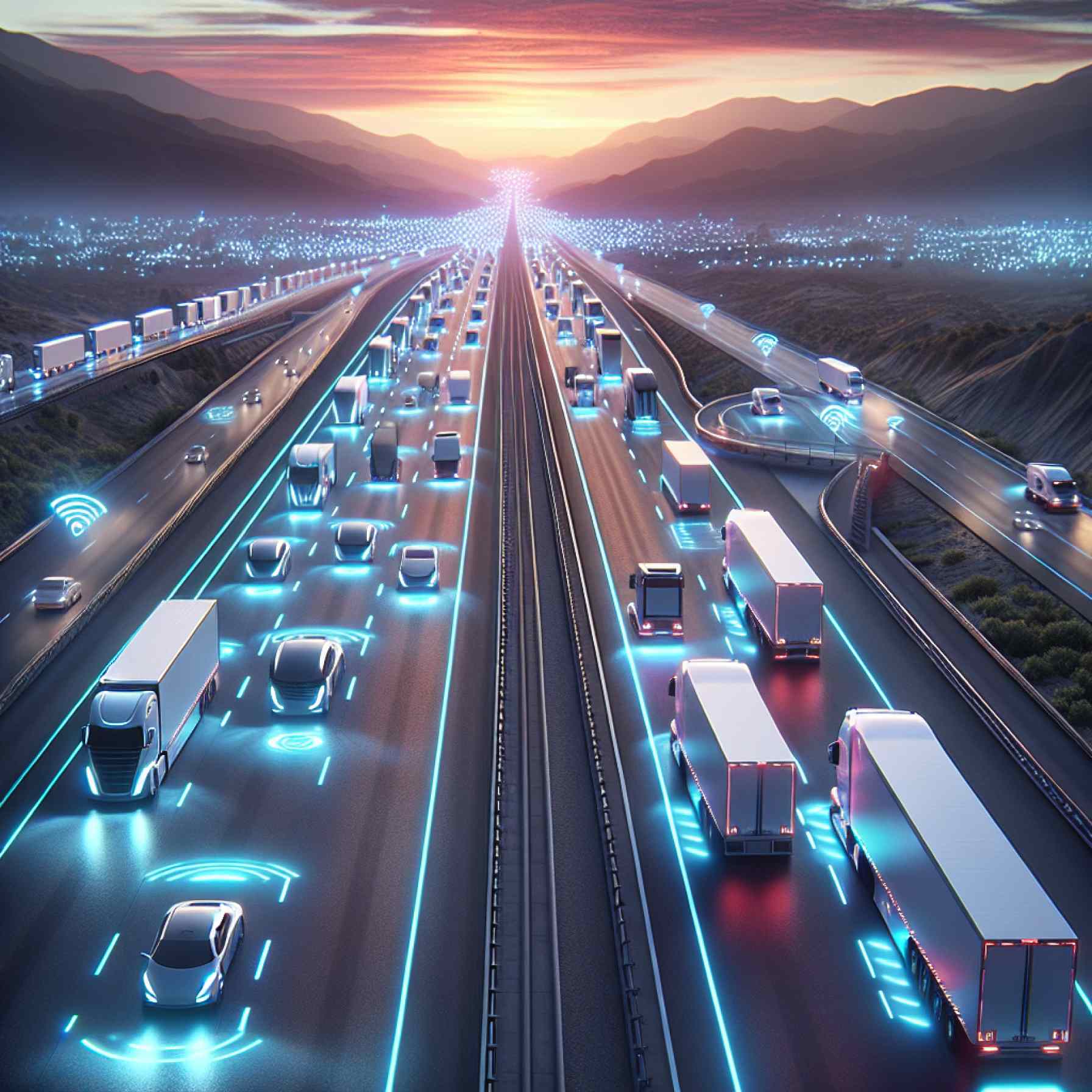- Autonomous semi-trucks are being tested on Texas highways between Dallas and Houston, marking a significant advancement in transportation technology.
- Aurora’s driverless freight trucks have covered over 1,200 miles without human intervention, showcasing the potential for efficiency in logistics.
- Uber Freight and Hirschbach Motor Lines are pioneering commercial partners benefiting from this innovation.
- By 2035, it’s predicted that 10% of U.S. freight trucks could operate autonomously, potentially reducing costs per mile by 42% according to McKinsey.
- Concerns arise regarding job security for truckers and the lack of comprehensive federal safety regulations for autonomous vehicles.
- At least ten other companies are developing similar driverless technologies, signaling a rapid shift in the industry.
- The transition to autonomous freight trucks represents both an evolution in transportation and a challenge for societal adaptation.
The Texas highways have become the proving grounds for an audacious innovation that could reshape the future of transportation. On the bustling artery between Dallas and Houston, autonomous semi-trucks are boldly rolling without a soul at the wheel, visions of a once-distant future barreling into today’s reality.
Aurora, a vanguard in autonomous freight, has shattered the logistical ceiling with its driverless delivery operations, steering massive carriers seamlessly down the 240-mile stretch. After four meticulous years of development and testing, these high-tech haulers have achieved over 1,200 miles without a human operator, a feat that becomes more staggering considering it translates to over two round-trips between the cities. Their inaugural commercial partners, Uber Freight and Hirschbach Motor Lines, are reaping the benefits of a technology poised to redefine efficiency.
Visualize the open road as these hulking transformer-like beings glide silently past, guided not by human touch or eye but by vast networks of sensors and algorithms. These trucks echo a growing chorus—their arrival heralds a bold new era where upward of 10% of freight trucks on U.S. roads might drive themselves by 2035. A McKinsey report projects an awe-inspiring 42% cost-per-mile reduction for fully automated fleets, a statistic that fuels both excitement and trepidation.
However, as this technological tide rises, it tugs at the fabric of trucker communities. Unions cast wary eyes at these mechanized marvels, raising flags about job security and the uncharted waters of safety regulations. The federal landscape remains largely untouched by comprehensive legislation, leaving many questions about oversight in autonomous travel unanswered.
In a rapid evolution of industry and infrastructure, a fleet of at least ten more companies races to the finish line, seeking to unfurl their own driverless solutions. By next year, the roads may very well hum with the quiet prowess of machines unshackled from human hands.
These mechanical giants do more than transport goods—they signal a transformation in how we envision movement itself. The whisper of their engines is a clarion call: behold the future, here to claim its place on the highways of today. Whether this shift brings progress or peril depends on how society steers the wheel in this unfolding journey.
Driverless Trucks Revolutionize Highways: What You Need to Know
The Rise of Autonomous Freight: A Technology with Far-Reaching Impact
Driverless semi-trucks are blazing trails on Texas highways, offering a glimpse into the future of transportation with Aurora leading the charge in autonomous freight technology. These vehicles are not just technological marvels; they represent the convergence of innovation, logistics, and the socio-economic fabric of the trucking industry. But what are the additional facets of this breakthrough that weren’t fully covered in the source article?
Industry Trends and Market Forecasts
– Projected Growth: According to a McKinsey report, autonomous trucking could reduce the cost-per-mile by 42%. This drastic reduction is anticipated to significantly increase the adoption of autonomous freight solutions, with predictions suggesting that around 10% of freight trucks in the U.S. will be driverless by 2035.
– Investment Surge: The autonomous vehicle industry has seen significant investment, with dozens of companies competing to capitalize on this prosperous market. It is expected that this sector will attract further investment, especially with tech giants and traditional automotive manufacturers stepping into the arena.
Real-World Use Cases
– Operational Efficiency: Companies like Uber Freight and Hirschbach Motor Lines benefit from improved efficiency with autonomous trucks, experiencing quicker turnaround times and fewer human resource challenges such as driver shortages and hours-of-service restrictions.
– Environmental Impact: Autonomous trucks can optimize routes and improve fuel efficiency through advanced algorithms, potentially reducing emissions compared to traditional trucking.
Safety and Regulations
– Challenges in Regulation: Current federal regulations for autonomous vehicles remain vague. Policymakers must address gaps in safety standards, data privacy, and incident liability to manage these changes effectively.
– Safety Concerns: While technology promises safer roads due to reduced human error, the transition involves ensuring vehicles can handle extreme weather conditions, complex road systems, and potential cybersecurity threats.
Controversies and Limitations
– Job Displacement: The introduction of driverless trucks sparks significant concerns among labor unions, fearing job loss in communities reliant on truck driving professions. Efforts are needed to re-skill affected workers and find new opportunities for integration into the evolving transport industry.
– Public Acceptance: There is hesitation among the public regarding safety and reliability, making it crucial for companies to build transparency and trust.
Preparing for Transformation
Tips for Businesses:
– Integrate Gradually: Businesses should consider integrating autonomous vehicles alongside human-operated trucks initially to ensure a smoother transition.
– Employee Training: Work on reskilling programs for existing employees to help them transition into roles that support autonomous technologies.
– Stay Informed: Continually monitor regulatory changes and technological advancements to stay ahead in adopting autonomous freight solutions.
Conclusion
Autonomous trucks symbolize a transformative shift in transportation, offering substantial benefits and challenging existing paradigms. As the technology matures, society must balance innovation with care—ensuring the progress made on highways is mirrored by the progress in societal infrastructure and job security frameworks.
For further information on the evolving role of technology in transportation, visit Aurora.
